Louis Couperus et la France
Arts & Lettres du Nord
Le numéro 4 de Deshima, revue d’histoire globale des pays du Nord, vient de paraître, une livraison entièrement en langue française. Il contient un dossier de de 210 pages sur l’un des plus grands écrivains néerlandais, Louis Couperus (1863-1923), l’auteur de La Force des ténèbres (De stille kracht, 1900), roman que Paul Verhoeven se propose de porter à l’écran et dont la traduction française a paru en 1986 aux éditions du Sorbier.
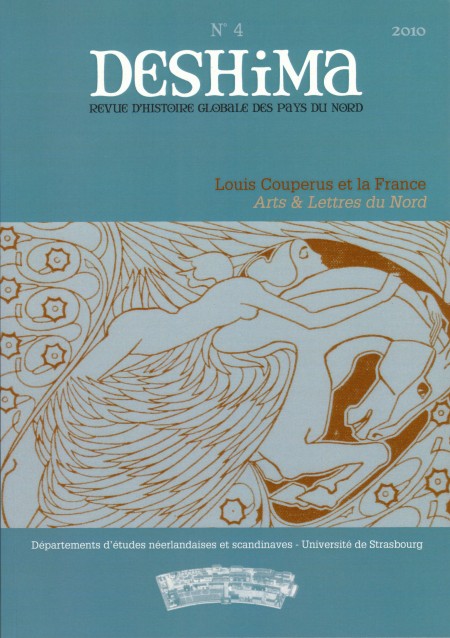
Avant-propos
Le présent numéro de Deshima offre une large place à la littérature ainsi qu’à l’histoire et la traduction littéraires. Tout d’abord à travers un dossier consacré à l’écrivain haguenois Louis Couperus – des articles sur sa vie et son œuvre ainsi que des nouvelles et feuilletons en traduction –, ensuite par une contribution sur un romancier originaire de la Flandre française : Paul Gadenne, enfin grâce à des pages pour la plupart inédites de poètes d’expression française (le Suisse François Debluë et la Québécoise Louise Warren qui évoque ses séjours en Flandre, en particulier dans l’ancienne maison des traducteurs de Leuven) et d’expression néerlandaise (les Flamands Roland Jooris et Paul Bogaert). Cette attention portée à la littérature se prolonge dans la partie du volume consacrée aux pays scandinaves : des contributions du traducteur Philippe Bouquet, une étude de Marthe Segrestin sur Ibsen et Strindberg ainsi que des poèmes de Pia Tafdrup.
La Hollande est par ailleurs à l’honneur dans une évocation de la peintre Charley Toorop (article de Catherine Jordy), la Flandre à travers les propos d’une grande figure du monde musical, Paul Van Nevel, recueillis par la romancière bruxelloise Sandrine Willems.
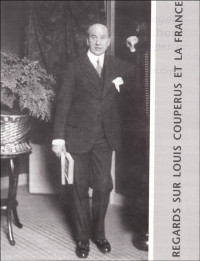 Écrivain méconnu aujour- d’hui en France, Louis Couperus (1863-1923) oc- cupe dans la littérature de son pays une place de tout premier plan. En quarante ans de vie littéraire, il a laissé une œuvre monumentale à bien des titres : somptuosité de la langue, profondeur de l’observation mariée à une légèreté de ton, diversité des genres – poésie, nouvelle, feuilleton, récit, conte my- thologique, roman (historique, psychologique, mytho- logique, symbolique…). Les Volledige Werken (Œuvres complètes) éditées à la fin du XXe siècle regroupent pas moins de 50 volumes.
Écrivain méconnu aujour- d’hui en France, Louis Couperus (1863-1923) oc- cupe dans la littérature de son pays une place de tout premier plan. En quarante ans de vie littéraire, il a laissé une œuvre monumentale à bien des titres : somptuosité de la langue, profondeur de l’observation mariée à une légèreté de ton, diversité des genres – poésie, nouvelle, feuilleton, récit, conte my- thologique, roman (historique, psychologique, mytho- logique, symbolique…). Les Volledige Werken (Œuvres complètes) éditées à la fin du XXe siècle regroupent pas moins de 50 volumes.
Né à La Haye le 10 juin 1863 dans un milieu de hauts fonctionnaires coloniaux, Louis Couperus a passé une partie de ses jeunes années à Batavia, capitale des Indes néerlandaises, la future Djakarta. Grand itinérant, il retournera dans cet archipel (pour y écrire une de ses plus belles œuvres : De stille kracht), voyagera en Scandinavie (on trouve des échos de cette période dans le roman Noodlot), en Angleterre, en Espagne, séjournera par ailleurs en Algérie (voir l’article de José Buschman), au Japon et bien souvent aussi en Suisse ou encore en Allemagne. La France et l’Italie l’accueilleront, lui et sa cousine germaine Elisabeth qu’il a épousée en 1891, durant de nombreuses années. Encore adolescent, sa découverte de l’œuvre pétrarquienne le confirme dans sa vocation d’écrivain. La première nouvelle qu’il donne à lire à ses compatriotes met d’ailleurs en scène une rencontre entre Pétrarque et Boccace. À l’âge de 23 ans, il publie un deuxième recueil de poèmes qui contient en particulier un cycle intitulé « Laure ». Mais c’est au genre romanesque, à celui du feuilleton et à la nouvelle qu’il va consacrer la plus grande partie de son temps jusqu’à sa mort survenue le 16 juillet 1923. Connu en France – et plus encore en Angleterre et en Allemagne – dès la fin du XIXe siècle, époque de la parution aux éditions Plon de deux de ses romans (Majesté et Paix Universelle), il s’établit avec son épouse à Nice en 1900. Il vivra dix ans dans cette ville proche de l’Italie qu’il affectionne tout particulièrement (voir « La sultane blanche. Louis Couperus et Nice » de Christian Marcipont). Il est alors l’un des rares si ce n’est le seul écrivain hollandais à vivre de sa plume. Aux Pays-Bas, ses œuvres sont publiées dans des éditions magnifiques – qui font aujourd’hui le régal des collectionneurs – dont les couvertures sont conçues et dessinées par de grands artistes, par exemple Jan Toorop (voir la couverture de ce numéro), Theo Neuhuys, B.W. Wierink, C.A. Lion Cachet ou encore H.P. Berlage. Un de ces col- lectionneurs, Ronald Breugelmans, décédé le 5 février dernier, a laissé un ouvrage qui répertorie les différentes traductions des ouvrages du Haguenois : Louis Couperus 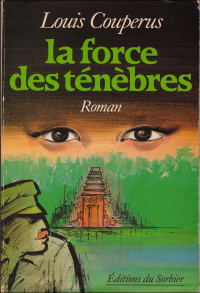 in den vreemde (2ème édition revue et augmentée, Leyde, 2008). Aux lecteurs n’ayant pas accès à la langue néerlandaise, on conseillera la lecture du roman « indonésien » La Force des ténèbres (De stille kracht, 1900), dans la traduction de Selinde Margueron éditée par Le Sorbier en 1986 avec une préface de Philippe Noble. En anglais et en allemand, de nombreuses œuvres de Cou- perus sont accessibles dans des traductions de qualité.
in den vreemde (2ème édition revue et augmentée, Leyde, 2008). Aux lecteurs n’ayant pas accès à la langue néerlandaise, on conseillera la lecture du roman « indonésien » La Force des ténèbres (De stille kracht, 1900), dans la traduction de Selinde Margueron éditée par Le Sorbier en 1986 avec une préface de Philippe Noble. En anglais et en allemand, de nombreuses œuvres de Cou- perus sont accessibles dans des traductions de qualité.
Pour être vraiment complet, notre dossier aurait d’ailleurs dû s’intéresser aux traductions françaises et aux traducteurs (Georges Khnopff, Louis Bresson, Paul Eyquem, Félicia Barbier…) de Couperus ainsi qu’aux gens de lettres qui lui ont consacré quelques pages en français : Theodor de Wyzewa, Renée d’Ulmès, Maurice Spronck, Adrienne Lautère, Jules Béraneck, Julien Benda, Christiane Fournier… L’adaptation que le Haguenois a donnée de Chantecler d’Edmond Rostand aurait mérité un article dans la veine de celui que Bertrand Abraham propose sur la « traduction » de La Tentation de saint Antoine de Gustave Flaubert. Un contretemps nous a empêché de terminer une contribution sur les écrits que l’écrivain a laissés sur des villes françaises où il a séjourné au début de l’automne 1909, Arles et Avignon, des pages dans lesquelles le grand lecteur qu’était Couperus – voir la contribution de Kim Andringa – s’inspire par endroits d’un beau travail de son contemporain André Hallays : Avignon et Le Comtat Ve- naissin.
Les nouvelles retenues dans ce volume – dont l’emblématique « Les jumelles de théâtre » – éclairent deux ou trois facettes de l’œuvre du romancier : certaines illustrent le ton badin qu’il aimait à employer tout en nous conduisant dans quelques-uns de ses lieux de prédilection, en l’occurrence Scheveningen et Nice ; « Le jeune roi » revient sur une thématique qu’il avait développée à la fin du XIXe siècle dans ses « romans des rois » ; « Comment on écrit un roman » nous livre certains secrets de la cuisine de l’écrivain. Le texte que le Haguenois a publié sur Paris en 1921 et que Marjan Krafft-Groot évoque dans « Paris au regard de Métamorphose de Louis Couperus » aurait certes eu sa place dans ce petit florilège.
Ouvrage de H.T.M. van Vliet consacré aux couvertures des livres de Couperus
 Nous tenons à remercier Thomas Beaufils qui nous a invité à réaliser ce numéro de Deshima et bien entendu toutes les personnes qui ont fourni une contribution, en particulier Christian Marci- pont pour ses traductions. Nos remerciements vont aussi au professeur H.T.M. van Vliet qui nous a autorisé à publier des nouvelles de Louis Couperus dans des traductions basées sur les Volledige Werken, immense projet éditorial qui a été mené à bien sous sa direction ; à José Buschman qui a eu la gentillesse de nous fournir bien des conseils ainsi que nombre de photographies reproduites dans le présent numéro ; à Ronald Breugelmans qui, avant sa disparition, a toujours accepté avec enthousiasme de nous fournir maints documents et renseignements ; à Tom Van de Voorde du Fonds Flamand des Lettres pour son rôle auprès des poètes flamands dont nous publions des pages ; au NLPVF pour son concours au financement des traductions ; au Letterkundig Museum de La Haye ; enfin à Thomas Mohnike, Ersie Leria, Sandra Miller et Bertrand Abraham pour la couverture, la maquette, la mise en page ou encore le travail de relecture.
Nous tenons à remercier Thomas Beaufils qui nous a invité à réaliser ce numéro de Deshima et bien entendu toutes les personnes qui ont fourni une contribution, en particulier Christian Marci- pont pour ses traductions. Nos remerciements vont aussi au professeur H.T.M. van Vliet qui nous a autorisé à publier des nouvelles de Louis Couperus dans des traductions basées sur les Volledige Werken, immense projet éditorial qui a été mené à bien sous sa direction ; à José Buschman qui a eu la gentillesse de nous fournir bien des conseils ainsi que nombre de photographies reproduites dans le présent numéro ; à Ronald Breugelmans qui, avant sa disparition, a toujours accepté avec enthousiasme de nous fournir maints documents et renseignements ; à Tom Van de Voorde du Fonds Flamand des Lettres pour son rôle auprès des poètes flamands dont nous publions des pages ; au NLPVF pour son concours au financement des traductions ; au Letterkundig Museum de La Haye ; enfin à Thomas Mohnike, Ersie Leria, Sandra Miller et Bertrand Abraham pour la couverture, la maquette, la mise en page ou encore le travail de relecture.
Relevons pour finir que l’association qui défend l’œuvre de Couperus, la Louis Couperus Genootschap, propose un magnifique site. Par ailleurs, à La Haye, un musée est dédié à cette grande figure des lettres néerlandaises. Une de ses œuvres, inspirée de Pindare, L’Ode, est disponible, dans une traduction de Louise de Gursé. Enfin, le lecteur trouvera divers textes et documents sur le présent blogue.
Daniel Cunin
Sommaire & résumés
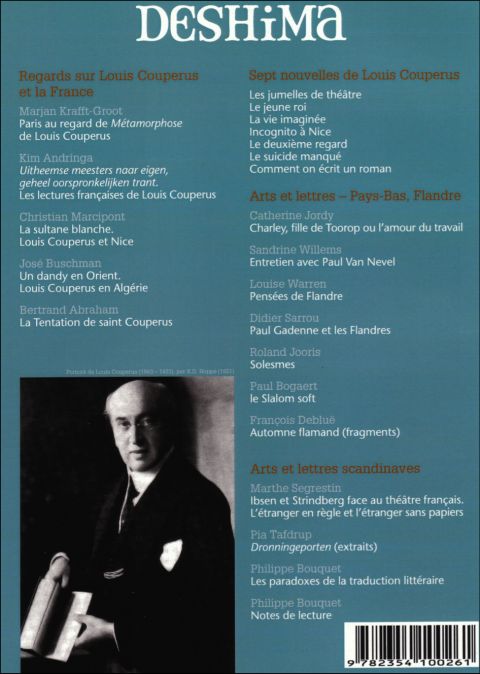
Marjan Krafft-Groot
Paris au regard de Métamorphose de Louis Couperus
Paris through the eyes of Louis Couperus’ Metamorphosis
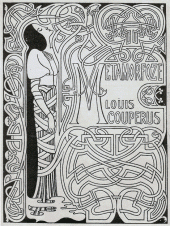 The present article strives to investigate the importance of Couperus’ Paris journey for his work and aesthetics, taking one of his masterpieces, Metamor- phosis, as its focal point. The analysis shows the interaction of life and literary work, sug- gesting traces of literary works and persons that may have ins- pired and influenced the author.
The present article strives to investigate the importance of Couperus’ Paris journey for his work and aesthetics, taking one of his masterpieces, Metamor- phosis, as its focal point. The analysis shows the interaction of life and literary work, sug- gesting traces of literary works and persons that may have ins- pired and influenced the author.
Kim Andringa
Les lectures françaises de Louis Couperus
“Uitheemse meesters naar eigen, geheel oorspronkelijken trant”. The French readings of Louis Couperus
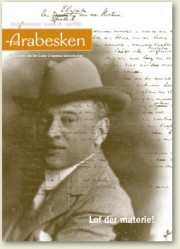 This article offers an insight into the French readings of Louis Couperus which left their marks on his work. He is at first attracted by art for art’s sake, but Zola opens his eyes to realism. His personal natu- ralism is less theoretical and more psychological than Zola’s, which makes him a fellow of Bourget. His interest for the life of the soul reveals the influence of Maeterlinck. In his historical novels, Cou- perus sets greater value than Flaubert or Lombard in the psychology of his protagonists. His “king’s novels”, like the one by Lemaître, show us a king in doubt about monarchy, but he insists on the human rather than the political dimension. Couperus was an inspired reader, taking from his French masters the elements that allowed him to let his personal voice as a writer be heard.
This article offers an insight into the French readings of Louis Couperus which left their marks on his work. He is at first attracted by art for art’s sake, but Zola opens his eyes to realism. His personal natu- ralism is less theoretical and more psychological than Zola’s, which makes him a fellow of Bourget. His interest for the life of the soul reveals the influence of Maeterlinck. In his historical novels, Cou- perus sets greater value than Flaubert or Lombard in the psychology of his protagonists. His “king’s novels”, like the one by Lemaître, show us a king in doubt about monarchy, but he insists on the human rather than the political dimension. Couperus was an inspired reader, taking from his French masters the elements that allowed him to let his personal voice as a writer be heard.
Christian Marcipont
La Sultane banche. Louis Couperus et Nice
The white sultana. Louis Couperus and Nice
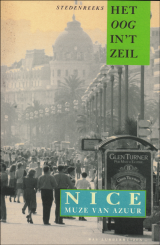 The article explores the im- portance of the city of Nice for the life and oeuvre of Louis Couperus. In June 1899, Louis Couperus (who had the idea for some time to leave the Nether- lands for good) and his wife stayed for the first time in Nice merely by chance, as they came here to wait for the ship that would take them to Dutch East Indies, today’s Indonesia. In the work of Couperus, Nice appears at first as a place of aristocratic cosmo- politism, but than even and foremost as a place of sensuality and liberty – as opposed to the North, particularly The Hague, which is described as op- pressing and frigid. The Hague represents traditions and conventions, Nice the emancipation from tradition; the North is melancholic, the South enthusiastic. Nice becomes feminized; a sultana gleaming of purity and whiteness.
The article explores the im- portance of the city of Nice for the life and oeuvre of Louis Couperus. In June 1899, Louis Couperus (who had the idea for some time to leave the Nether- lands for good) and his wife stayed for the first time in Nice merely by chance, as they came here to wait for the ship that would take them to Dutch East Indies, today’s Indonesia. In the work of Couperus, Nice appears at first as a place of aristocratic cosmo- politism, but than even and foremost as a place of sensuality and liberty – as opposed to the North, particularly The Hague, which is described as op- pressing and frigid. The Hague represents traditions and conventions, Nice the emancipation from tradition; the North is melancholic, the South enthusiastic. Nice becomes feminized; a sultana gleaming of purity and whiteness.
José Buschman
Un dandy en Orient. Louis Couperus en Algérie
A dandy in the Orient. Louis Couperus in Algeria
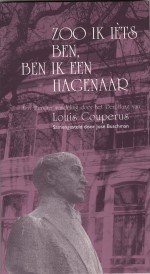 In the winter of 1920, Louis Couperus made a trip of six months to Algeria. His im- pressions were published in a book in 1921, after being serialized in a Dutch weekly. At the beginning, Couperus was overwhelmed by the “Oriental dream”, which he thought he met everywhere. Later, however, his enthusiasm was tempered. In her article, José Buschman reveals what Couperus must have witnessed in Northern Africa, but did not describe. Her explanation for this reticence draws upon new psychological insights in Couperus’ life and art.
In the winter of 1920, Louis Couperus made a trip of six months to Algeria. His im- pressions were published in a book in 1921, after being serialized in a Dutch weekly. At the beginning, Couperus was overwhelmed by the “Oriental dream”, which he thought he met everywhere. Later, however, his enthusiasm was tempered. In her article, José Buschman reveals what Couperus must have witnessed in Northern Africa, but did not describe. Her explanation for this reticence draws upon new psychological insights in Couperus’ life and art.
Bertrand Abraham
La Tentation de Saint Couperus
The temptation of Saint Couperus
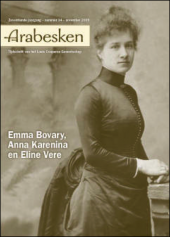 Using several Dutch articles and an unpublished Paris III‑Sorbonne Nouvelle docto- ral thesis by Margje Antje Groot from 1986 as a point of departure, the article analyzes the relationship of Flaubert’s La Tentation de Saint Antoine and its “translation” by Louis Couperus. My reading strives to show, by reorganizing the scattered data in a coherent manner, in what way the choices made by Couperus in his “translation” (“choices” is employed here in all its meanings, particularly even its most literal sense, as his “translation” cuts down the text in a significant manner) are symptomatic for an aesthetic that is more that of Couperus than Flaubert. The meaning of the term “translation” is at the same time questioned and contested: In which extend does the text by Couperus translate the one by Flaubert? In which way does that “translation” represent a step forward in the evolution of the Dutch author’s oeuvre? Our analysis doesn’t pretend to refer to the research in its totality, but draws upon its principal results.
Using several Dutch articles and an unpublished Paris III‑Sorbonne Nouvelle docto- ral thesis by Margje Antje Groot from 1986 as a point of departure, the article analyzes the relationship of Flaubert’s La Tentation de Saint Antoine and its “translation” by Louis Couperus. My reading strives to show, by reorganizing the scattered data in a coherent manner, in what way the choices made by Couperus in his “translation” (“choices” is employed here in all its meanings, particularly even its most literal sense, as his “translation” cuts down the text in a significant manner) are symptomatic for an aesthetic that is more that of Couperus than Flaubert. The meaning of the term “translation” is at the same time questioned and contested: In which extend does the text by Couperus translate the one by Flaubert? In which way does that “translation” represent a step forward in the evolution of the Dutch author’s oeuvre? Our analysis doesn’t pretend to refer to the research in its totality, but draws upon its principal results.
Louis Couperus
Seven Short Stories
Les Jumelles de théâtre
The Opera Glasses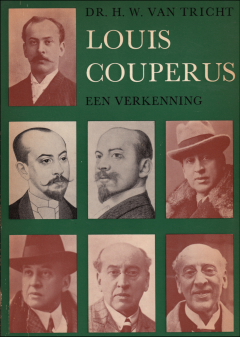
Le Jeune roi
The Young King
La Vie imaginée
The Imagined Life
Incognito à Nice
Incognito in Nice
Le Deuxième regard
The Second Glance
Le Suicide manqué
The Wasted Suicide
Comment on écrit un roman
How to Write a Novel?
Catherine Jordy
Charley, fille de Toorop ou l'amour du travail
Charley, Toorop’s daughter. A passion for work
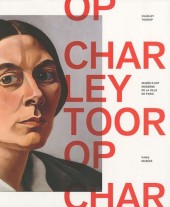 Charley Toorop (1891‑1955) is one of the most important Dutch painters of the 20th century. In the midst of the fascination for abstraction, she remained truth to realism in her painting, becoming a true portraitist and more specifically a self‑portraitist, as Rembrandt or Van Gogh could be. She also practiced other genres, inclu- ding landscapes, still lives and group portraits. Her style is remarkably sharp, precise and, above all, she used to paint like a man, in a constant search for perfection.
Charley Toorop (1891‑1955) is one of the most important Dutch painters of the 20th century. In the midst of the fascination for abstraction, she remained truth to realism in her painting, becoming a true portraitist and more specifically a self‑portraitist, as Rembrandt or Van Gogh could be. She also practiced other genres, inclu- ding landscapes, still lives and group portraits. Her style is remarkably sharp, precise and, above all, she used to paint like a man, in a constant search for perfection.
Sandrine Willems
Entretien avec Paul Van Nevel
Interviews with Paul Van Nevel
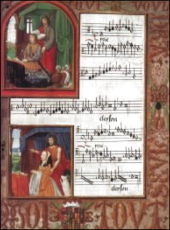 This pages form extracts of interviews that Sandrine Wil- lems conducted with Paul Van Nevel, the founder and direc- tor of the Huelgas Ensemble, while she prepared her docu- mentary Chants et soupirs des Renaissants selon Paul Van Nevel, Renaissance Voices, in- terpreted by Paul Van Nevel.
This pages form extracts of interviews that Sandrine Wil- lems conducted with Paul Van Nevel, the founder and direc- tor of the Huelgas Ensemble, while she prepared her docu- mentary Chants et soupirs des Renaissants selon Paul Van Nevel, Renaissance Voices, in- terpreted by Paul Van Nevel.
Didier Sarrou
Paul Gadenne et les Flandres
Paul Gadenne and Flanders
 Paul Gadenne, the author of La Plage de Scheveningen, was born in French Flanders. This region, however is not predominant in his oeuvre. The article seeks to analyze to what extend the author was marked by it, and asks, what place he gives in his work to Flanders in general. It seems that the region of his childhood is too near to him; he could not manipulate the landscape as he wanted. Flanders is an element of his imaginative substratum that re-emerges every now and then, often when an intense moment of innocence, purity, happiness illuminates the soul of a character.
Paul Gadenne, the author of La Plage de Scheveningen, was born in French Flanders. This region, however is not predominant in his oeuvre. The article seeks to analyze to what extend the author was marked by it, and asks, what place he gives in his work to Flanders in general. It seems that the region of his childhood is too near to him; he could not manipulate the landscape as he wanted. Flanders is an element of his imaginative substratum that re-emerges every now and then, often when an intense moment of innocence, purity, happiness illuminates the soul of a character.
Roland Jooris
Solesmes
An evocation of Pierre Reverdy’s oeuvre by a great Flemish poet.
Louise Warren
Pensées de Flandre
Thoughts of Flanders
Evocation of stays in Flanders.
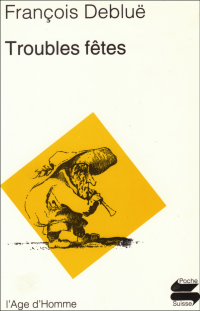 Paul Bogaert
Paul Bogaert
the Slalom soft
Poems.
François Debluë
Automne flamand
Flemish Autumn
Poems.
Pia Tafdrup
Dronningeporten
Poems.
Marthe Segrestin
Ibsen et Strindberg face au théâtre français. L'étranger en règle et l'étranger sans papiers
Ibsen, Strindberg and French theatre. The legal alien and the illegal immigrant
Ibsen and Strindberg fascinated the most innovating directors in Europe from the last decade of the 19th century. But whereas they helped to reshape the German stage, they remained underestimated in France until World War II. Their plays meant a real threat to French dramaturgy and the Parisian stage did not tolerate the intruders. Only Ibsen was finally accepted, when he was made out to be a good imitator of the French playwrights. Strindberg, however, has long been seen as too much a perturber of the French theatre tradition of the well made play.
Philippe Bouquet
Les paradoxes de la traduction littéraire
The paradoxes of the literary translation
The Decalogue of a translator of Scandinavian lan- guages
Philippe Bouquet
Notes de lecture
Reviews
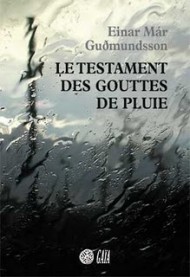
Arni Thorarinson, Le Dres- seur d’insectes, Métaillé, 2008, & Einar Már Guð- mundsson, Le Testament des gouttes de pluie, Gaïa, 2008, both translated from the Icelandic by Éric Boury.
illustrations
Louis Couperus, Metamorfoze, Amsterdam, L.J. Veen, 1897, cou- verture dessinée par Jan Toorop.
Arabesken, n° 31, mai, 2008, revue publiée par l’Association des Amis de Louis Couperus, La Haye (en couverture : Louis Couperus).
Nice, muze van azuur, Amsterdam, Bas Lubberhuizen, 2004 (recueil de textes - dans la série Het Oog in 't Zeil - consacrés à Nice réunis par Dirk Leyman : Michel Butor, J.M.G. Le Clezio, Marco Daane, Bart van Loo, Emmanuel Waegemans, Caroline de Westenholz, David van Reybrouck, Paul Gellings…)
José Buschman, Zoo ik ièts ben, ben ik een Hagenaar, une promenade littéraire à travers le La Haye de Louis Couperus, introduction de Caroline de Westenholz, Amsterdam, Bas Lubberhuizen, 1996.
 Arabesken, n° 34, novembre 2009, avec entre autres un essai de Nienke Timmers : « Maladie et suicide chez Madame Bovary, Anna Karénine et Eline Vere ». Voir aussi sur Flaubert et Couperus le Couperus Cahier n° 11 : Maarten van Buuren, Emma Bovary, Anna Karenina, Eline Vere. Drie fatale vrouwen in het fin de sièlce (Emma Bovary, Anna Karénine, Eline Vere. Trois femmes fatales de la fin de siècle), La Haye, Louis Couperus Genootschap, 2010.
Arabesken, n° 34, novembre 2009, avec entre autres un essai de Nienke Timmers : « Maladie et suicide chez Madame Bovary, Anna Karénine et Eline Vere ». Voir aussi sur Flaubert et Couperus le Couperus Cahier n° 11 : Maarten van Buuren, Emma Bovary, Anna Karenina, Eline Vere. Drie fatale vrouwen in het fin de sièlce (Emma Bovary, Anna Karénine, Eline Vere. Trois femmes fatales de la fin de siècle), La Haye, Louis Couperus Genootschap, 2010.
H.W. van Tricht, Louis Couperus. Een verkenning, La Haye, Bert Bakker-Daamen, 1965.
Charley Toorop, Catalogue de l’exposition présentée au Musée d’Art moderne de la Ville de Paris, du vendredi 19 février 2010 au dimanche 9 mai 2010, 240 illustrations couleurs et 20 illustrations noir & blanc, Paris Musées, 2010.
Chants et soupirs des Renaissants selon Paul Van Nevel, un documentaire de Sandrine Willems, Les Piérides - CBA - Canvas - Alizé production, 2001 (détail de la pochette du DVD)
Paul Gadenne, Poèmes, Arles, Actes Sud, 1983.
François Debluë, Troubles fêtes, Lausanne, L’Âge d’Homme, 1995.
Einar Már Guðmundsson, Le Testament des gouttes de pluie, Montfort-en-Chalosse, Gaïa, 2008.
prix du numéro de Deshima 15 euros : toutes les infos
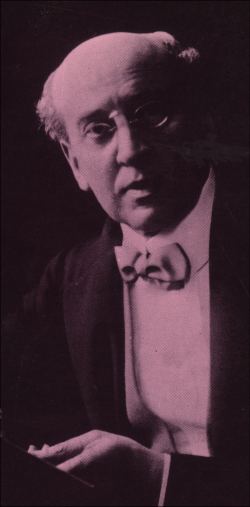
Frédéric Bastet, Louis Couperus. Une biographie, couverture (détail)
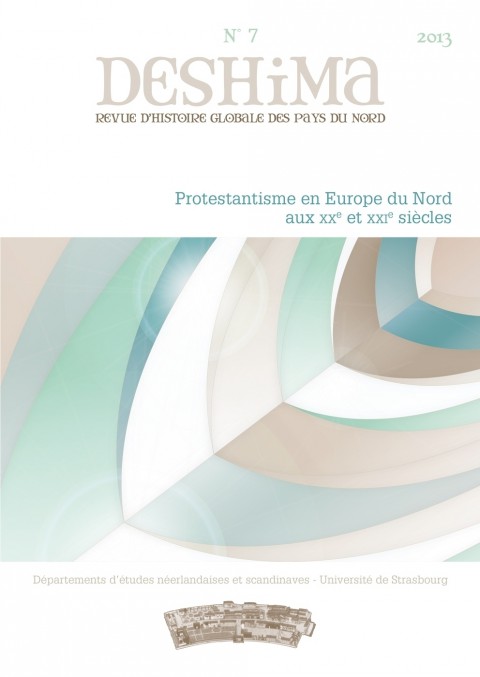
 Émir Mahieddin
Émir Mahieddin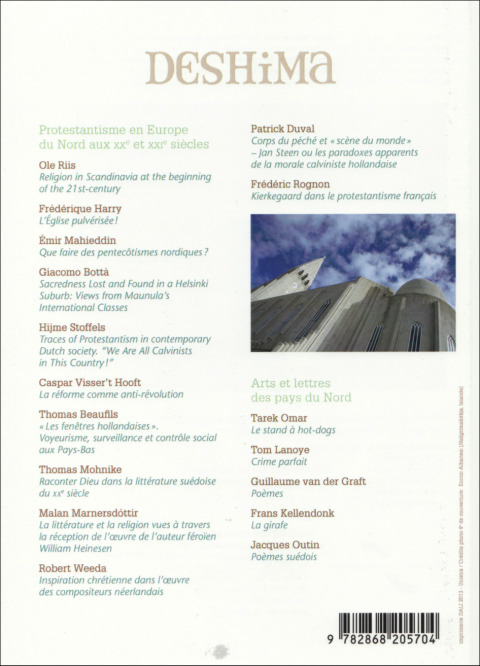



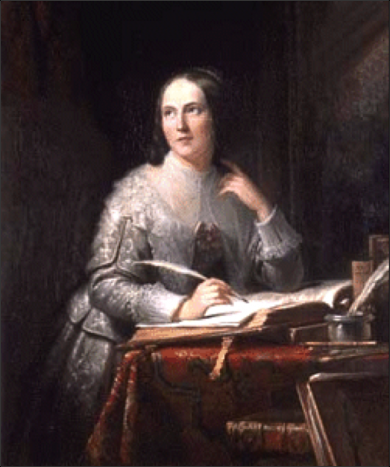
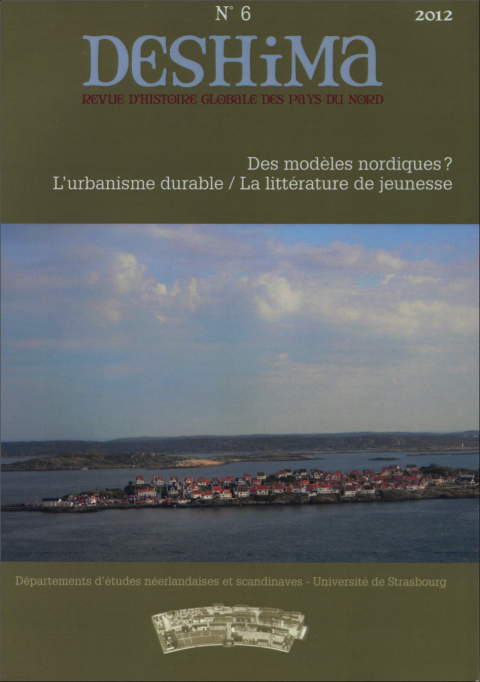
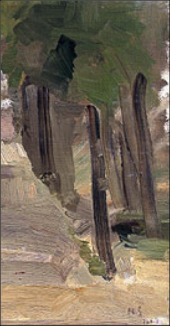 Aurélie Choné & Philippe Hamman : Faut-il rendre la ville invisible ? Retours sur le « modèle nordique » d’urbanisme durable
Aurélie Choné & Philippe Hamman : Faut-il rendre la ville invisible ? Retours sur le « modèle nordique » d’urbanisme durable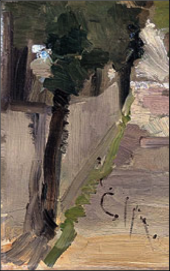 Bente Christensen : L’argent et la vie : la littérature pour jeunes filles dans la Norvège de l’entre-deux-guerres
Bente Christensen : L’argent et la vie : la littérature pour jeunes filles dans la Norvège de l’entre-deux-guerres
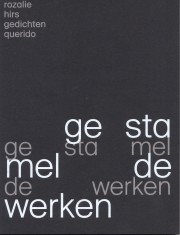 * Les 10 poèmes de Rozalie Hirs publiés dans ce numéro sont extraits de
* Les 10 poèmes de Rozalie Hirs publiés dans ce numéro sont extraits de 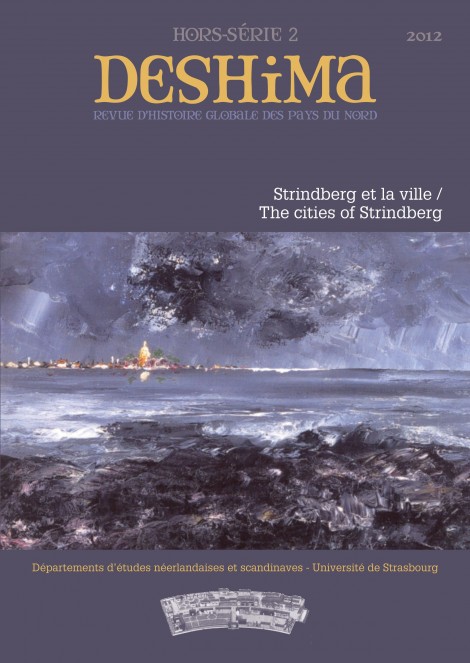
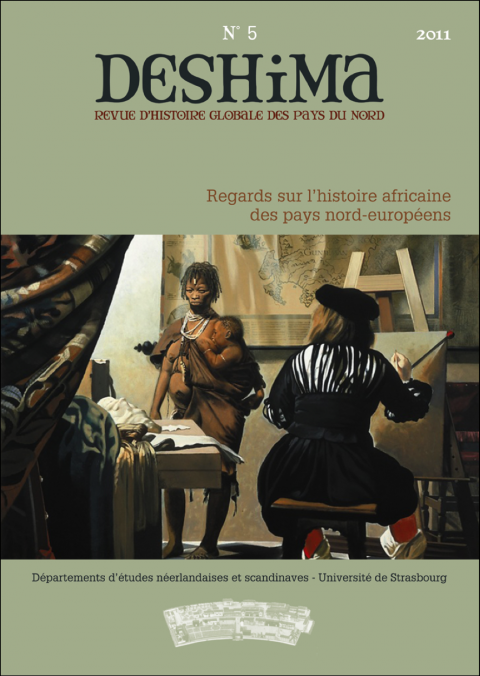

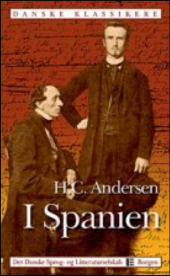 The article explores how space is represented in Hans Christian Andersen’s I Spanien (1863). The travelog begins at the French border and continues through Spain via Gibraltar, down to Morocco, and from there back to Spain via another route. It is characterized by precise observations, numerous poems, and passages of lyrical prose. The descriptions of architecture and infrastructures, landscapes and cities are enriched with inter-textual references, historical background information, and the emotions of the first-person narrator. This creates a complex image of the spaces described, which is analyzed with the help of David Harvey’s Marxist cultural geography and Edward Said’s postcolonial theory. The emphasis of this inquiry is on the relationship between Denmark, Spain, and Africa in the topography of I Spanien. The article demonstrates how I Spanien establishes a hybrid geography of mutual relations and thus opens a space for a different understanding of the relationship between Europe and Africa than was common in the nineteenth century.
The article explores how space is represented in Hans Christian Andersen’s I Spanien (1863). The travelog begins at the French border and continues through Spain via Gibraltar, down to Morocco, and from there back to Spain via another route. It is characterized by precise observations, numerous poems, and passages of lyrical prose. The descriptions of architecture and infrastructures, landscapes and cities are enriched with inter-textual references, historical background information, and the emotions of the first-person narrator. This creates a complex image of the spaces described, which is analyzed with the help of David Harvey’s Marxist cultural geography and Edward Said’s postcolonial theory. The emphasis of this inquiry is on the relationship between Denmark, Spain, and Africa in the topography of I Spanien. The article demonstrates how I Spanien establishes a hybrid geography of mutual relations and thus opens a space for a different understanding of the relationship between Europe and Africa than was common in the nineteenth century.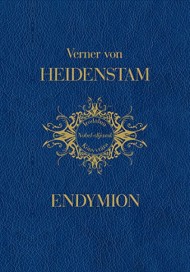 In postcolonial studies, the subversion of binary ways of thinking is regarded as a useful device for resistance. One of the strategies used for overcoming binaries is “mimicry”, which means that the colonized imitate their colonizers in order to communicate on the same level. At the same time, imitation can never be just a copy; it will always change the original. This hypothesis is examined using two literary texts from Scandinavia: Peter Høeg’s Rejse ind i et mørkt hjerte (1990) and Verner von Heidenstam’s Endymion (1889). Both texts connect the colonial situation with the subversion of gender differences. Høeg meets our expectations, since in his text the breakdown of the gender paradigm causes the deconstruction of the domination of colonial power, whereas the analysis leads us to the surprising result in Heidenstam’s text that the subversion of gender differences stabilizes the colonial difference.
In postcolonial studies, the subversion of binary ways of thinking is regarded as a useful device for resistance. One of the strategies used for overcoming binaries is “mimicry”, which means that the colonized imitate their colonizers in order to communicate on the same level. At the same time, imitation can never be just a copy; it will always change the original. This hypothesis is examined using two literary texts from Scandinavia: Peter Høeg’s Rejse ind i et mørkt hjerte (1990) and Verner von Heidenstam’s Endymion (1889). Both texts connect the colonial situation with the subversion of gender differences. Høeg meets our expectations, since in his text the breakdown of the gender paradigm causes the deconstruction of the domination of colonial power, whereas the analysis leads us to the surprising result in Heidenstam’s text that the subversion of gender differences stabilizes the colonial difference.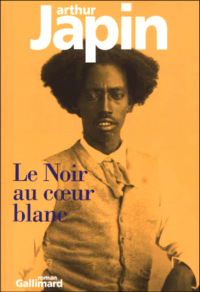 Starting in 1830, the Dutch were obliged to reinforce their troops in the East Indies (now Indonesia) to extend their colonial domination. Because of the shortage of European soldiers, the Dutch turned to the Gold Coast in West Africa. As of 1637, they were in possession of Elmina, the commercial port of the Ashanti kingdom, from which tens of thousands of slaves were shipped to Brazil, Curacao, Surinam and other places to work on plantations. But the Dutch had little success recruiting Ashanti volunteers. Only 3,000 men left for Java between 1831 and 1872. These Belanda Hitam (Black Dutch) participated in military campaigns in Borneo, Bali, and Sumatra. They were considered to be “insolent Negroes,” unable to adapt to colonial society. And yet they eventually became completely integrated, and most of them stayed in Java and started families. To counterbalance their story of becoming Black Dutch citizens in the East Indies, I evoke the extraordinary adventure of two Ashanti princes, Kwasi and Kwame, who were sent to Holland to obtain a Dutch education and become Black Dutch citizens by striking the opposite path in a story related by Arthur Japin in his beautiful novel The Two Hearts of Kwasi Boachi.
Starting in 1830, the Dutch were obliged to reinforce their troops in the East Indies (now Indonesia) to extend their colonial domination. Because of the shortage of European soldiers, the Dutch turned to the Gold Coast in West Africa. As of 1637, they were in possession of Elmina, the commercial port of the Ashanti kingdom, from which tens of thousands of slaves were shipped to Brazil, Curacao, Surinam and other places to work on plantations. But the Dutch had little success recruiting Ashanti volunteers. Only 3,000 men left for Java between 1831 and 1872. These Belanda Hitam (Black Dutch) participated in military campaigns in Borneo, Bali, and Sumatra. They were considered to be “insolent Negroes,” unable to adapt to colonial society. And yet they eventually became completely integrated, and most of them stayed in Java and started families. To counterbalance their story of becoming Black Dutch citizens in the East Indies, I evoke the extraordinary adventure of two Ashanti princes, Kwasi and Kwame, who were sent to Holland to obtain a Dutch education and become Black Dutch citizens by striking the opposite path in a story related by Arthur Japin in his beautiful novel The Two Hearts of Kwasi Boachi.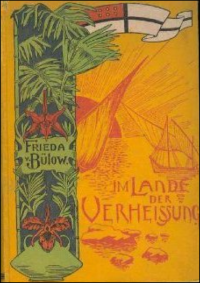 Although Frieda von Bülow and Karen Blixen lived in different times, they shared a strange community of fate. Both of them staged their lives in East Africa in novels: Bülow in Im Lande der Verheißung (1899) and Blixen in Out of Africa / Den afrikanske Farm (1937). The two writers share a colonial attitude and treat Africa in similar ways. They confess their adoration for African nature and succumb to the spell of exoticism when encountering a continent of charming beauty, all the while reaffirming their attachment to their worlds of origin by relying on the image of an immense African farm overseen by a woman with a firm hand. In the two novels, a white, European aristocratic woman is depicted as exercising authority over the indigenous population, thus enacting a kind of “feudal colonial feminism” as a condition for her own liberty and liberation. The African farm thus becomes a symbol of a utopian social project that opens up a field of unlimited possibilities, combinations, hybridizations, and reconstructions, erasing borders of time and space as well as those of identity.
Although Frieda von Bülow and Karen Blixen lived in different times, they shared a strange community of fate. Both of them staged their lives in East Africa in novels: Bülow in Im Lande der Verheißung (1899) and Blixen in Out of Africa / Den afrikanske Farm (1937). The two writers share a colonial attitude and treat Africa in similar ways. They confess their adoration for African nature and succumb to the spell of exoticism when encountering a continent of charming beauty, all the while reaffirming their attachment to their worlds of origin by relying on the image of an immense African farm overseen by a woman with a firm hand. In the two novels, a white, European aristocratic woman is depicted as exercising authority over the indigenous population, thus enacting a kind of “feudal colonial feminism” as a condition for her own liberty and liberation. The African farm thus becomes a symbol of a utopian social project that opens up a field of unlimited possibilities, combinations, hybridizations, and reconstructions, erasing borders of time and space as well as those of identity.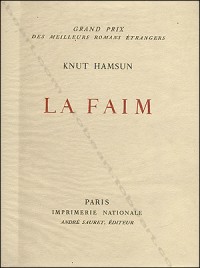 This essay demonstrates the analytical potential of the motif of hunger in Knut Hamsun’s Sult (Hunger) (1890) and J. M. Coetzee’s Life & Times of Michael K (1983). Sult was published in Norway at the end the nineteenth century and Life & Times of Michael K in South Africa almost one hundred years later. In spite of these different historical and geographical backgrounds, the motif of hunger in both texts reveals similar questions. They explore strategies working against the modern disciplining of the body. This article presents a short history of hunger and analyzes the motif of hunger in the texts from a comparative perspective. It focuses on the semantics of the descriptions of hunger, on the perception of time, and on forms of control that are contrasted with the protagonists’ behaviour, revealing a close relation between hunger and the modern bio-political practices reflected in the texts.
This essay demonstrates the analytical potential of the motif of hunger in Knut Hamsun’s Sult (Hunger) (1890) and J. M. Coetzee’s Life & Times of Michael K (1983). Sult was published in Norway at the end the nineteenth century and Life & Times of Michael K in South Africa almost one hundred years later. In spite of these different historical and geographical backgrounds, the motif of hunger in both texts reveals similar questions. They explore strategies working against the modern disciplining of the body. This article presents a short history of hunger and analyzes the motif of hunger in the texts from a comparative perspective. It focuses on the semantics of the descriptions of hunger, on the perception of time, and on forms of control that are contrasted with the protagonists’ behaviour, revealing a close relation between hunger and the modern bio-political practices reflected in the texts.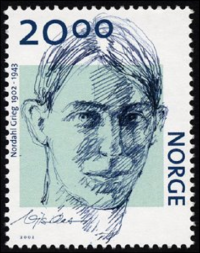 Nordahl Grieg (1902-1943) was a Norwegian traveller, journalist, poet, and a writer. In the 1930s, he became a communist and supported the USSR unconditionally. In interviews and features in the press, he approved of the Moscow trials (staged by Stalin against former Bolsheviks) and later the German-Soviet pact. But when the German army attacked his own country in April 1940, he immediately volunteered to defend it and became an ardent Norwegian patriot. In the novel Ung må verden ennu være (1938) (The World Must Still Be Young), Grieg describes the USSR, the trials, and the Spanish Civil War. He later stated that the novel was intended to justify soviet policy, including its more questionable sides. But when reading this work today, it appears rather to depict a dismal picture of soviet society. This article is an attempt to read Ung må verden ennu være from this perspective of what we know about its author. Grieg’s novel thus appears as a broad description of Europe in the 1930s, where the storm of major catastrophes is brewing.
Nordahl Grieg (1902-1943) was a Norwegian traveller, journalist, poet, and a writer. In the 1930s, he became a communist and supported the USSR unconditionally. In interviews and features in the press, he approved of the Moscow trials (staged by Stalin against former Bolsheviks) and later the German-Soviet pact. But when the German army attacked his own country in April 1940, he immediately volunteered to defend it and became an ardent Norwegian patriot. In the novel Ung må verden ennu være (1938) (The World Must Still Be Young), Grieg describes the USSR, the trials, and the Spanish Civil War. He later stated that the novel was intended to justify soviet policy, including its more questionable sides. But when reading this work today, it appears rather to depict a dismal picture of soviet society. This article is an attempt to read Ung må verden ennu være from this perspective of what we know about its author. Grieg’s novel thus appears as a broad description of Europe in the 1930s, where the storm of major catastrophes is brewing.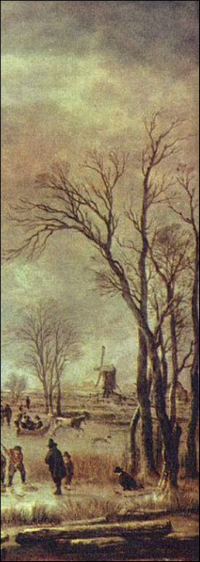 In the Dutch Golden Age, the production of winter scenes in paintings reached a climax. In focusing on these representations of winter and coldness, one might wonder whether the paintings correlated with the actual weather. If so, do the paintings genuinely show the weather at the time they were painted? In this article, I discuss that, because the winter scenes became exceedingly appreciated by a buying public, painters began to produce these paintings without taking the actual weather into account. Eventually, they painted winter scènes de genre and developed a typology of images for these winter scenes. The unusual, rough coldness of the Little Ice Age winters actually taking place outside generally disappeared from the paintings, and joyful winter scenes were preferred.
In the Dutch Golden Age, the production of winter scenes in paintings reached a climax. In focusing on these representations of winter and coldness, one might wonder whether the paintings correlated with the actual weather. If so, do the paintings genuinely show the weather at the time they were painted? In this article, I discuss that, because the winter scenes became exceedingly appreciated by a buying public, painters began to produce these paintings without taking the actual weather into account. Eventually, they painted winter scènes de genre and developed a typology of images for these winter scenes. The unusual, rough coldness of the Little Ice Age winters actually taking place outside generally disappeared from the paintings, and joyful winter scenes were preferred.
 Écrivain méconnu aujour- d’hui en France,
Écrivain méconnu aujour- d’hui en France,  in den vreemde (2ème édition revue et augmentée, Leyde, 2008). Aux lecteurs n’ayant pas accès à la langue néerlandaise, on conseillera la lecture du roman « indonésien » La Force des ténèbres (De stille kracht, 1900), dans la traduction de
in den vreemde (2ème édition revue et augmentée, Leyde, 2008). Aux lecteurs n’ayant pas accès à la langue néerlandaise, on conseillera la lecture du roman « indonésien » La Force des ténèbres (De stille kracht, 1900), dans la traduction de 

 The present article strives to investigate the importance of Couperus’ Paris journey for his work and aesthetics, taking one of his masterpieces, Metamor- phosis, as its focal point. The analysis shows the interaction of life and literary work, sug- gesting traces of literary works and persons that may have ins- pired and influenced the author.
The present article strives to investigate the importance of Couperus’ Paris journey for his work and aesthetics, taking one of his masterpieces, Metamor- phosis, as its focal point. The analysis shows the interaction of life and literary work, sug- gesting traces of literary works and persons that may have ins- pired and influenced the author. This article offers an insight into the French readings of Louis Couperus which left their marks on his work. He is at first attracted by art for art’s sake, but Zola opens his eyes to realism. His personal natu- ralism is less theoretical and more psychological than Zola’s, which makes him a fellow of Bourget. His interest for the life of the soul reveals the influence of Maeterlinck. In his historical novels, Cou- perus sets greater value than Flaubert or Lombard in the psychology of his protagonists. His “king’s novels”, like the one by Lemaître, show us a king in doubt about monarchy, but he insists on the human rather than the political dimension. Couperus was an inspired reader, taking from his French masters the elements that allowed him to let his personal voice as a writer be heard.
This article offers an insight into the French readings of Louis Couperus which left their marks on his work. He is at first attracted by art for art’s sake, but Zola opens his eyes to realism. His personal natu- ralism is less theoretical and more psychological than Zola’s, which makes him a fellow of Bourget. His interest for the life of the soul reveals the influence of Maeterlinck. In his historical novels, Cou- perus sets greater value than Flaubert or Lombard in the psychology of his protagonists. His “king’s novels”, like the one by Lemaître, show us a king in doubt about monarchy, but he insists on the human rather than the political dimension. Couperus was an inspired reader, taking from his French masters the elements that allowed him to let his personal voice as a writer be heard. The article explores the im- portance of the city of Nice for the life and oeuvre of Louis Couperus. In June 1899, Louis Couperus (who had the idea for some time to leave the Nether- lands for good) and his wife stayed for the first time in Nice merely by chance, as they came here to wait for the ship that would take them to Dutch East Indies, today’s Indonesia. In the work of Couperus, Nice appears at first as a place of aristocratic cosmo- politism, but than even and foremost as a place of sensuality and liberty – as opposed to the North, particularly The Hague, which is described as op- pressing and frigid. The Hague represents traditions and conventions, Nice the emancipation from tradition; the North is melancholic, the South enthusiastic. Nice becomes feminized; a sultana gleaming of purity and whiteness.
The article explores the im- portance of the city of Nice for the life and oeuvre of Louis Couperus. In June 1899, Louis Couperus (who had the idea for some time to leave the Nether- lands for good) and his wife stayed for the first time in Nice merely by chance, as they came here to wait for the ship that would take them to Dutch East Indies, today’s Indonesia. In the work of Couperus, Nice appears at first as a place of aristocratic cosmo- politism, but than even and foremost as a place of sensuality and liberty – as opposed to the North, particularly The Hague, which is described as op- pressing and frigid. The Hague represents traditions and conventions, Nice the emancipation from tradition; the North is melancholic, the South enthusiastic. Nice becomes feminized; a sultana gleaming of purity and whiteness. In the winter of 1920, Louis Couperus made a trip of six months to Algeria. His im- pressions were published in a book in 1921, after being serialized in a Dutch weekly. At the beginning, Couperus was overwhelmed by the “Oriental dream”, which he thought he met everywhere. Later, however, his enthusiasm was tempered. In her article, José Buschman reveals what Couperus must have witnessed in Northern Africa, but did not describe. Her explanation for this reticence draws upon new psychological insights in Couperus’ life and art.
In the winter of 1920, Louis Couperus made a trip of six months to Algeria. His im- pressions were published in a book in 1921, after being serialized in a Dutch weekly. At the beginning, Couperus was overwhelmed by the “Oriental dream”, which he thought he met everywhere. Later, however, his enthusiasm was tempered. In her article, José Buschman reveals what Couperus must have witnessed in Northern Africa, but did not describe. Her explanation for this reticence draws upon new psychological insights in Couperus’ life and art. Using several Dutch articles and an unpublished Paris III
Using several Dutch articles and an unpublished Paris III
 Charley Toorop (1891
Charley Toorop (1891 This pages form extracts of interviews that
This pages form extracts of interviews that  Paul Gadenne, the author of La Plage de Scheveningen, was born in French Flanders. This region, however is not predominant in his oeuvre. The article seeks to analyze to what extend the author was marked by it, and asks, what place he gives in his work to Flanders in general. It seems that the region of his childhood is too near to him; he could not manipulate the landscape as he wanted. Flanders is an element of his imaginative substratum that re-emerges every now and then, often when an intense moment of innocence, purity, happiness illuminates the soul of a character.
Paul Gadenne, the author of La Plage de Scheveningen, was born in French Flanders. This region, however is not predominant in his oeuvre. The article seeks to analyze to what extend the author was marked by it, and asks, what place he gives in his work to Flanders in general. It seems that the region of his childhood is too near to him; he could not manipulate the landscape as he wanted. Flanders is an element of his imaginative substratum that re-emerges every now and then, often when an intense moment of innocence, purity, happiness illuminates the soul of a character.

 Arabesken
Arabesken